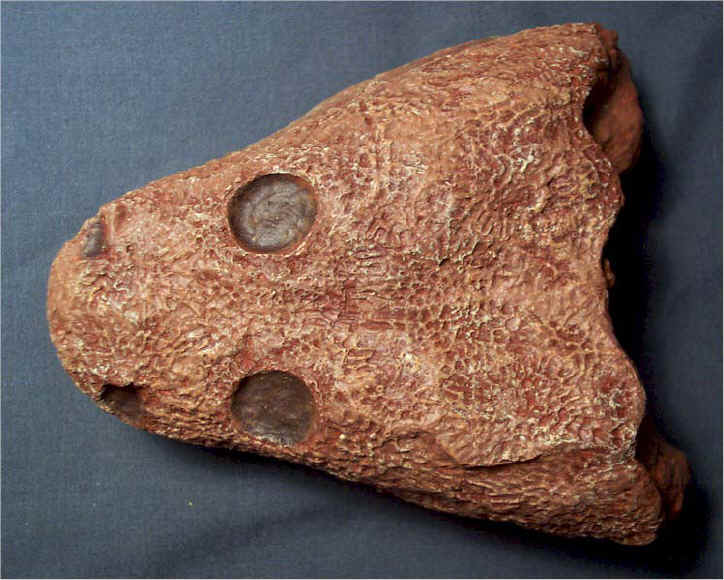[Recent Entries][Archive][Friends][User Info]
| October 27th, 2011 | |||||||||||
|---|---|---|---|---|---|---|---|---|---|---|---|
| 08:37 pm [industrialterro] [Link] |
Trimerorhachis Trimerorhachis is an extinct genus of dvinosaurian temnospondyl within the family Trimerorhachidae. It is known from the Early Permian of Texas. Its fossils are very common in the north-central part of the state. The type species of Trimerorhachis, T. insignis, was named by American paleontologist Edward Drinker Cope in 1878. A second species, T. sandovalensis, was named from New Mexico in 1980. The length of the largest specimens of Trimerorhachis is estimated to have been almost a metre (3.3 feet) in length. Trimerorhachis has a large triangular head with upward-facing eyes positioned near the front of the skull. The trunk is long and the limbs are relatively short. The presence of a branchial apparatus indicates that Trimerorhachis had external gills in life, much like the modern axolotl. The body of Trimerorhachis is also completely covered by small and very thin osteoderms, which overlap and can be up to 20 layers thick. These osteoderms act as an armor-like covering, especially around the tail. Their weight may have helped Trimerorhachis sink to the bottom of lakes and rivers where it would feed. Trimerorhachis was a fully aquatic temnospondyl. Like most dvinosaurs, it had external gills. The interclavicle and clavicle of the pectoral girdle are both very large, a feature that is shared with other aquatic temnospondyls. Many bones are poorly ossified, indicating that Trimerorhachis was poorly suited for movement on land. Trimerorhachis was probably an aquatic predator that fed on fish and small vertebrates. During the Early Permian, the area of New Mexico and Texas was a broad coastal plain that stretched from an ocean in the south to highlands in the north. Other common animals that lived alongside Trimerorhachis included lungfish and crossopterygians, the lepospondyl Diplocaulus, and the large sail-backed synapsid Dimetrodon. Small bones that likely belong to immature Trimerorhachis individuals have been found in the pharyngeal pouches of larger Trimerorhachis specimens. At first these bones were thought to be part of the branchial arches which surround the pouch, or remains of prey that had just been eaten before the animal died. If Trimerorhachis was a mouth brooder, the closest living analogue would be Darwin's Frog, which broods its young in its vocal sac. The bones in Trimerorhachis belong to juveniles that were much larger than those of Darwin's Frog, however. The young of the Gastric-brooding frog of Australia are comparable in size to those of Trimerorhachis but are brooded in the stomach rather than the throat. The number of brooded young in Darwin's Frog and the Gastric-brooding frog is also much higher than that of Trimerorhachis, as only a few individuals can be distinguished in the collection of bones. The only living amphibian that raises similarly sized young is the Golden coquí, although it does so through ovovivipary rather than brooding. Another possible explanation for the small bones is that they were originally located in the throat and were pushed into the pharyngeal pouch during fossilization. If this was the case, Trimerorhachis may have eaten its young instead of brooding them. This type of cannibalism is widespread in living amphibians, and most likely occurred among some prehistoric amphibians as well.
Ископаемые останки (1, 2, 3, 4):
Tags: Вымершие амфибии, Лабиринтодонты, Пермь, Темноспондилы | ||||||||||
| Comments | |||||||||||
А вот эти мелкие ямки по черепу, это было характерно для рептилий? Какое у них было назначение? (Reply to this) (Thread)
Это амфибия. Точное назначение ямок узнать трудно - наверное в них находились рецепторы кожи. (Reply to this) (Parent) | |||||||||||




